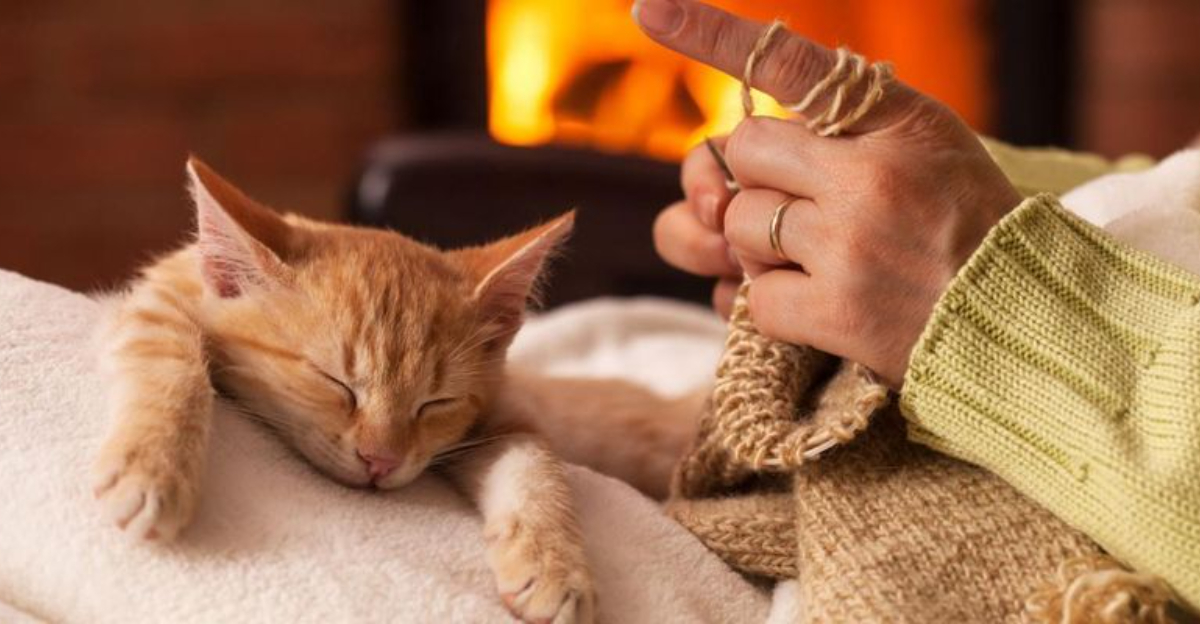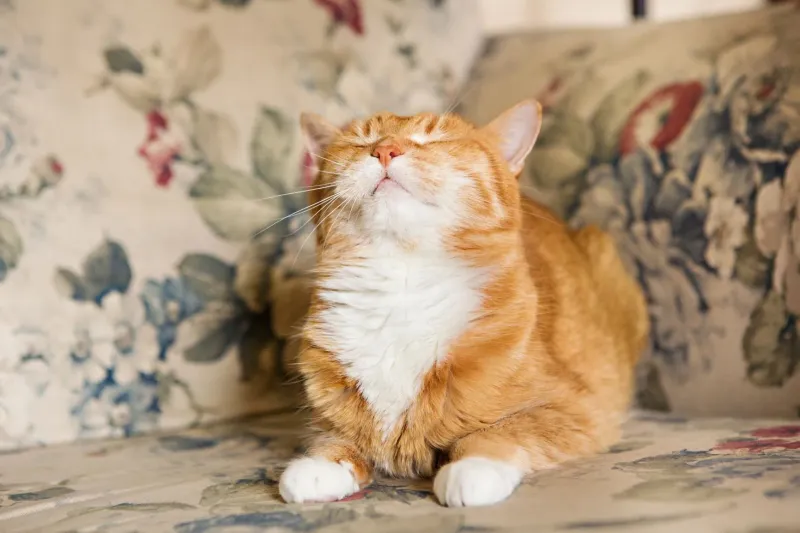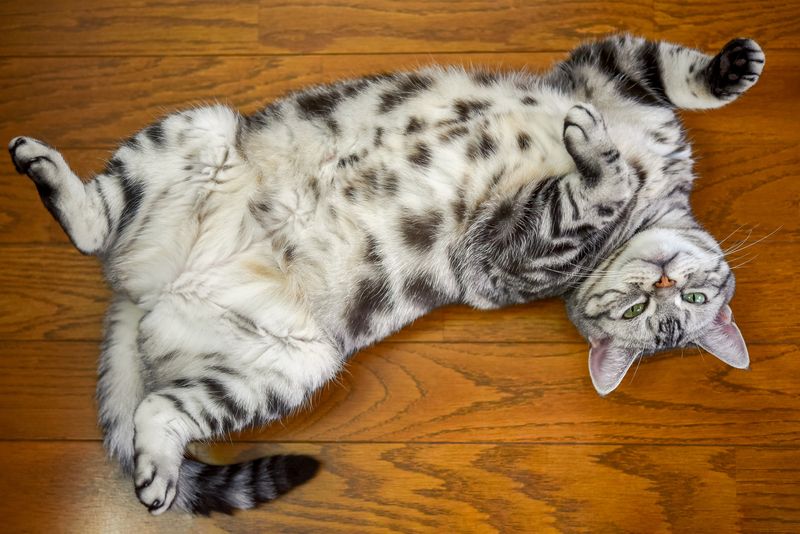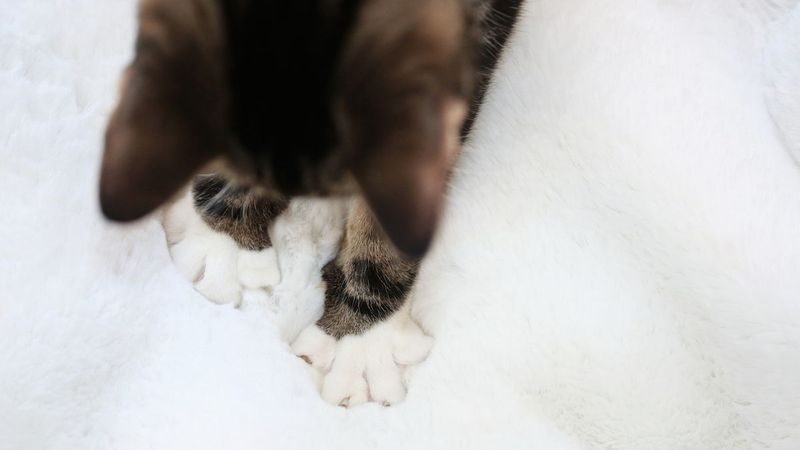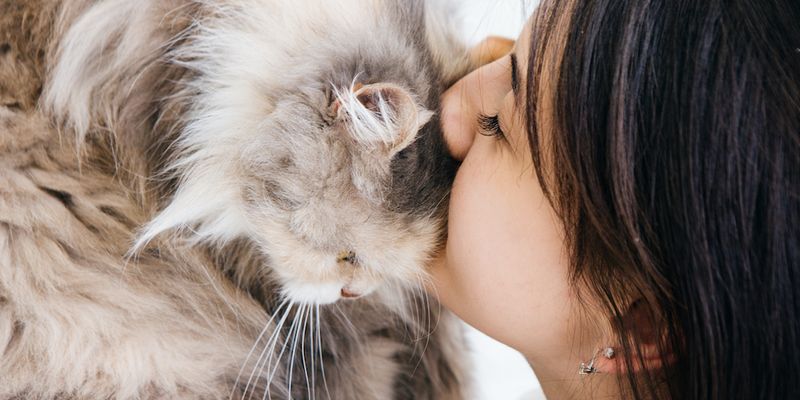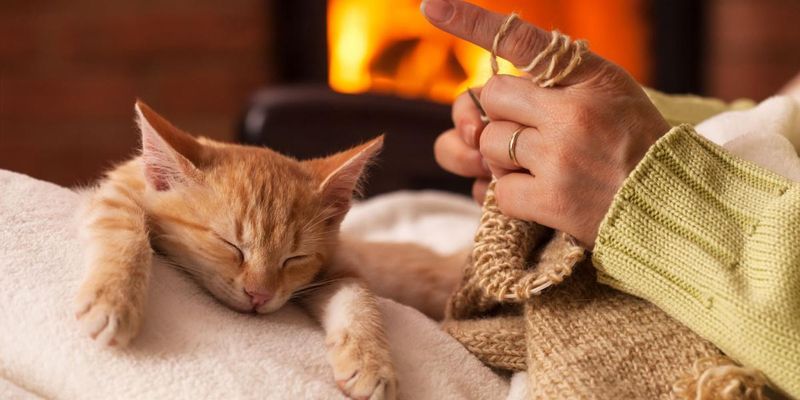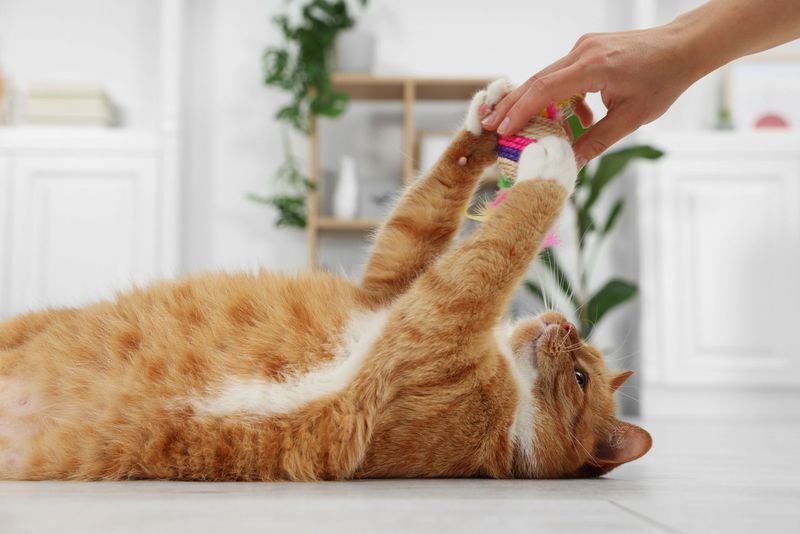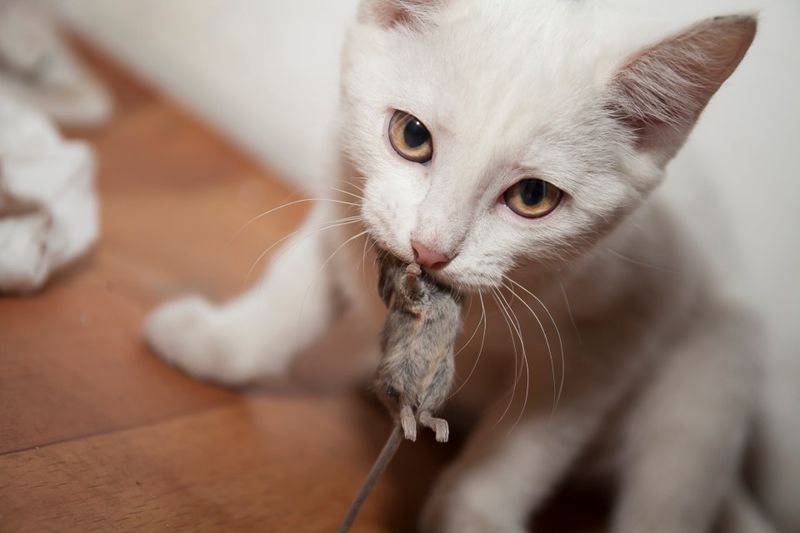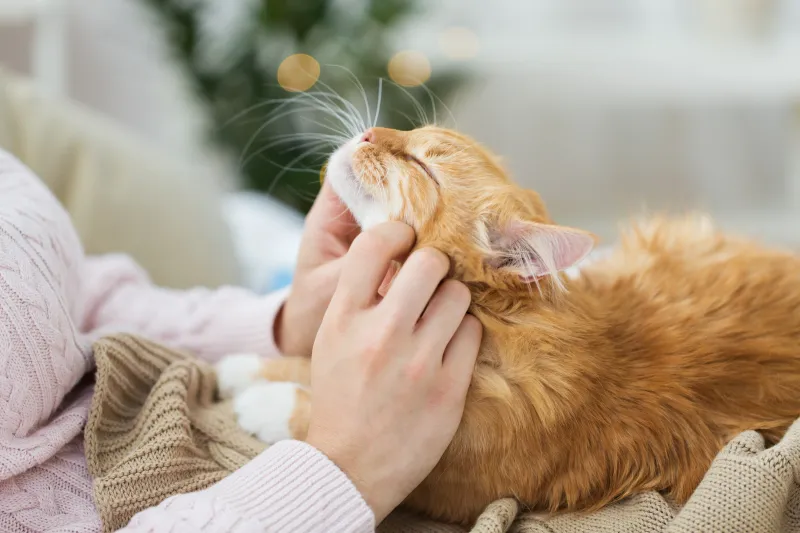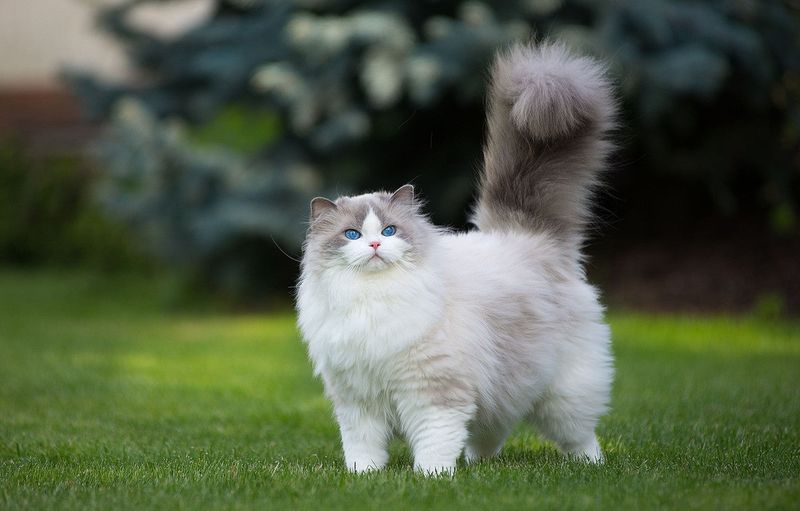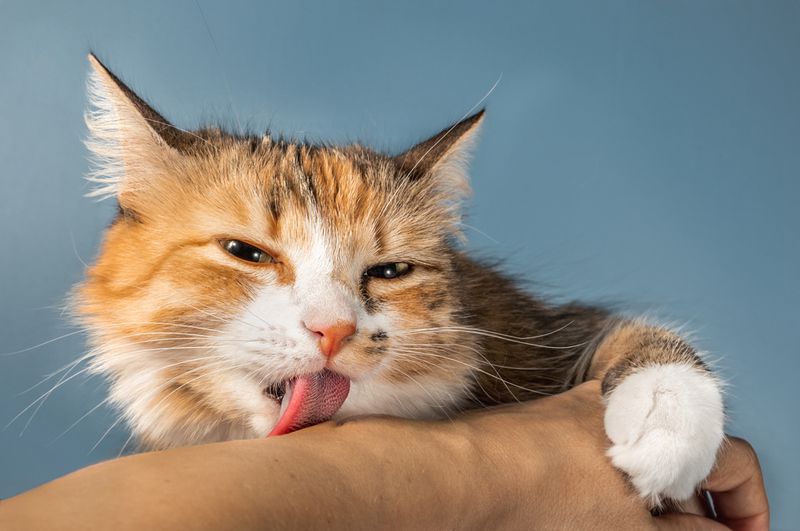📖 Table of Content:
- 1. Slow Blinks During Eye Contact
- 2. Belly Exposure When Relaxing
- 3. Kneading Your Lap or Clothing
- 4. Head-Butting and Face Rubbing
- 5. Sleeping Near or On You
- 6. Following You From Room to Room
- 7. Bringing You “Gifts”
- 8. Purring While Being Handled
- 9. Tail Position When Greeting You
- 10. Grooming You (Licking Your Hair or Skin)
Cats have a reputation for being independent and mysterious, but they actually show us how they feel in many ways. Understanding your cat’s trust signals can strengthen your bond and help you become an even better pet parent. When your feline friend trusts you, they’ll display specific behaviors that let you know you’ve earned a special place in their heart. Let’s explore the telltale signs that your cat truly trusts you.
1. Slow Blinks During Eye Contact
Cat experts call this the “kitty kiss” – when your feline friend looks at you and deliberately blinks very slowly. This gesture is actually a vulnerable moment for cats since they’re temporarily closing their eyes in your presence.
In the wild, closing eyes means letting down defenses. When your cat offers you slow blinks, they’re essentially saying, “I feel safe enough around you to be temporarily blind.” It’s one of the most sincere compliments a cat can give!
Try initiating this special communication by slowly blinking at your cat first. Many cats will return the gesture, creating a sweet moment of mutual trust.
2. Belly Exposure When Relaxing
Rolling over and showing their belly is a massive display of trust from your cat. The stomach area contains vital organs and represents a cat’s most vulnerable spot. In the wild, exposing this area would be extremely dangerous.
When your furry companion lounges around you with their tummy up, they’re essentially telling you they feel completely safe. However, this isn’t always an invitation for belly rubs! Many cats display their tummies as a sign of trust but still prefer not to be touched there.
Respect this boundary while appreciating the compliment they’re giving you by showing this vulnerable area.
3. Kneading Your Lap or Clothing
Those rhythmic paw pushes against your lap, blanket, or clothing are more than just cute behavior. Kneading (sometimes called “making biscuits”) starts when kittens nurse from their mothers, pushing against her to stimulate milk flow.
Adult cats who knead on you are displaying a deeply ingrained comfort behavior. They’re essentially treating you like their mother – the ultimate compliment in cat language! This action releases feel-good endorphins for your cat.
The more vigorously your cat kneads, the more content they typically feel. Even if those little claws can be uncomfortable, consider it a sign that your cat views you as their safe place.
4. Head-Butting and Face Rubbing
That gentle bump of a cat’s head against your hand, leg, or face is called “bunting” and serves as both affection and ownership marking. Cats have scent glands on their cheeks, chins, and foreheads that release pheromones unique to them.
When your feline friend rubs against you, they’re depositing their scent, essentially saying, “This human belongs to me.” Far from being just a territorial claim, this behavior shows they consider you part of their trusted inner circle.
The more frequently your cat engages in this rubbing ritual, the stronger their bond with you. It’s their way of creating a shared group scent that brings comfort to both of you.
5. Sleeping Near or On You
Cats spend roughly 15 hours daily sleeping, and their choice of napping spot speaks volumes about trust. Sleep makes animals vulnerable to potential threats, so when your cat dozes off on your lap, chest, or even just nearby, they’re showing enormous faith in you.
The closer they sleep to you, the more they trust your protection. A cat who sleeps with their back to you is displaying the ultimate confidence in your relationship, as they’re leaving their blind spot exposed while counting on you to watch for danger.
Many cats even synchronize their sleeping schedules with their humans, showing they consider you part of their social group.
6. Following You From Room to Room
Your feline shadow, who trails you around the house, is showing a strong bond of trust. Despite their independent reputation, cats who feel secure with their humans often want to maintain proximity, even during mundane activities like cooking or bathroom visits.
This behavior stems from social bonding – your cat sees you as their family member and prefers being where you are. They’re not just being nosy; they genuinely enjoy your company and feel safest when they can keep tabs on you.
Some cats even develop routines around their humans’ schedules, waiting by the door before you return or escorting you to bed each night.
7. Bringing You “Gifts”
Finding a toy mouse or, more alarmingly, an actual deceased critter at your feet might seem strange, but it’s actually high praise from your cat. This hunting behavior shows they consider you family who deserves to share in their bounty.
In feline social structures, mothers teach kittens to hunt, and cats in colonies sometimes share food. When your indoor hunter presents you with their “prey” (whether real or stuffed), they’re treating you as someone worthy of their resources.
Rather than scolding this natural behavior, acknowledge their gift with calm praise. Your cat is demonstrating both trust and care by including you in this important aspect of their instinctual life.
8. Purring While Being Handled
That soothing rumble from your cat’s chest during handling is more than just a pleasant sound. Cats typically purr when feeling content, but they’re particularly selective about purring while being held or petted by humans they trust.
A cat who maintains their purr even during potentially stressful moments like being picked up or having their paws touched is showing remarkable confidence in you. They’re essentially saying, “I know you won’t hurt me, so I can stay relaxed.”
The vibration frequency of purring actually promotes healing and stress reduction for both cat and human. Your cat’s purrs are literally a health benefit they share only with their inner circle!
9. Tail Position When Greeting You
A cat’s tail works like an emotional barometer, and the straight-up position with a slight curve at the tip (resembling a question mark) signals excitement and a friendly greeting. When your cat approaches you with this tail posture, they’re displaying their happiest, most trusting welcome.
Contrast this with a puffed tail (fear), thrashing tail (irritation), or tucked tail (anxiety). The upright, gently curved tail is reserved for those the cat considers safe and desirable company.
Pay attention to this body language when you come home. Cats who trust their humans often combine this tail greeting with other welcoming behaviors like chirping sounds or running to meet you at the door.
10. Grooming You (Licking Your Hair or Skin)
Being on the receiving end of a scratchy cat tongue might feel strange, but it’s actually a supreme compliment. Mutual grooming, called allogrooming, occurs only between cats who share strong social bonds and trust.
When your cat licks your hand, hair, or face, they’re treating you as part of their family group. This behavior helps create a shared scent profile and strengthens your social bond from your cat’s perspective.
While the sandpaper-like sensation might not be comfortable, recognize it as one of the highest forms of acceptance in the feline world. Your cat is literally treating you as one of their own kind!
